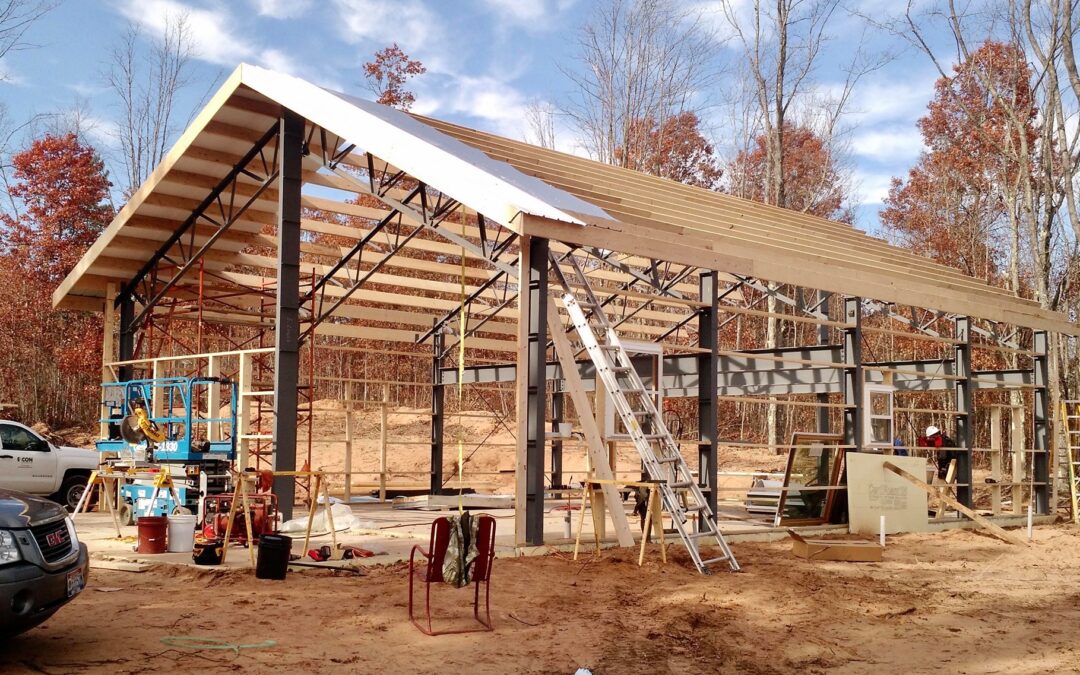Natural disasters can strike without warning, leaving communities in chaos and destruction. In the aftermath, the process of recovery becomes paramount. Post-disaster recovery efforts demand innovative solutions that not only rebuild but also fortify communities for the future. Hybrid buildings, constructed with a blend of wood and steel, are emerging as a crucial component of these recovery strategies. In this blog, we’ll explore how wood and steel hybrid buildings play a vital role in post-disaster recovery efforts, providing essential infrastructure and shelter to communities in need.
1. Rapid Deployment for Immediate Relief
Hybrid buildings are designed with speed in mind. They are pre-engineered to meet codes and require little to NO supplemental Engineering reviews. Certain brands like the MIRACLE TRUSS BUILDING, are pre-fitted at the fabrication shop to assure easy and quick assembly upon delivery. They can be rapidly deployed to provide immediate shelter for disaster survivors. These structures are pre-thought and pre-planned for quick and easy assembly, making them indispensable for emergency response teams.
2. Versatile Infrastructure Solutions
In the wake of a disaster, critical infrastructure such as medical facilities, schools, and community centers often suffer damage. Hybrid buildings can serve as versatile infrastructure solutions. They can be configured to meet a variety of needs, providing temporary to permanent healthcare facilities, classrooms, or meeting spaces for recovery coordination efforts.
3. Resilience to Subsequent Disasters
Hybrid buildings are engineered to withstand and resist a wide range of disasters, including earthquakes, hurricanes, and wildfires. Their durability means that they can serve as a resilient backbone for communities, reducing the risk of further damage in the event of subsequent disasters during the recovery process.
4. Community Rebuilding and Normalization
Miracle Truss type Buildings go beyond providing shelter. They offer spaces where communities can come together, rebuild, and normalize their lives. Whether used as temporary housing or community centers, these structures help foster a sense of togetherness and resilience among survivors. They can be easily finished to offer quick comfort and security to allow for sustainable and continued innovation for resolving issues that are vital to any recovery and rebuilding process for everyone.
5. Sustainability in Recovery
Sustainability is an essential aspect of post-disaster recovery. Hybrid buildings can be designed with sustainability in mind, using eco-friendly materials and energy-efficient technologies. This not only reduces the environmental impact but also ensures long-term cost savings for the community.
6. Cost-Effective Solutions
In the aftermath of a disaster, budgets are often stretched thin. Hybrid buildings provide cost-effective solutions, especially when compared to the construction of traditional brick-and-mortar structures. They allow communities to allocate resources more efficiently and rapidly to various recovery needs, that can further offer time and space to meet demands every quicker.
7. Temporary and Permanent Housing
Hybrid buildings can serve as temporary housing for displaced individuals and families. Once the immediate crisis has passed, these structures can be converted into permanent housing or repurposed for other community needs, maximizing their utility with unmatched simplicity, flexibility, and value.
8. Support for Vulnerable Populations
Vulnerable populations, such as the elderly, children, and individuals with disabilities, require specialized support during recovery efforts. Miracle Truss Buildings can be adapted to meet the unique needs of these groups, ensuring inclusivity, safety, and accessibility.
9. Learning from Experience
The lessons learned from using hybrid buildings in post-disaster recovery efforts can inform future disaster preparedness and response strategies. Their performance in real-world scenarios helps refine disaster resilience practices… And systems used by the like of Miracle Truss Buildings are in continuous phases of research and development to advance the convenience, adaptability, ease, and service of the structures to offer facilities with ways and means to continually advance the recovery and regeneration of the use value of the land and life in the stricken area.
10. Collaborative Efforts
Effective post-disaster recovery relies on collaboration among various stakeholders, including government agencies, non-profits, and private sector entities. Hybrid buildings can serve as a focal point for these collaborative efforts, bringing together resources and expertise.
In conclusion, the role of wood and steel hybrid buildings in post-disaster recovery efforts cannot be overstated. They provide swift and adaptable solutions that help communities recover, rebuild, and ultimately become more resilient. As we face an increasingly unpredictable world, the use of hybrid buildings represents a critical step forward in ensuring the safety and well-being of communities in times of crisis.



